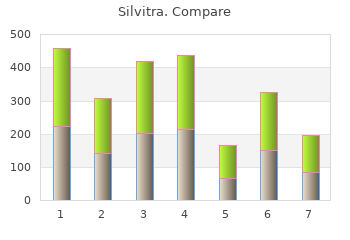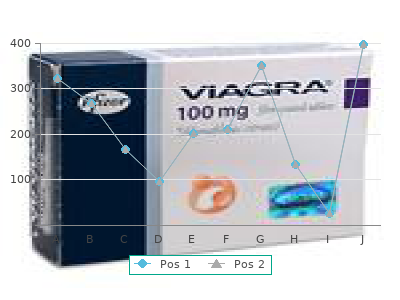Silvitra
By J. Dawson. Texas Christian University. 2019.
Functions of the Digestive Organs Organ Major functions Other functions Ingests food Moistens and dissolves food cheap silvitra 120 mg overnight delivery, allowing you to Chews and mixes food taste it Mouth Begins chemical breakdown of carbohydrates Cleans and lubricates the teeth and oral cavity Moves food into the pharynx Has some antimicrobial activity Begins breakdown of lipids via lingual lipase Propels food from the oral cavity to the Pharynx Lubricates food and passageways esophagus Esophagus Propels food to the stomach Lubricates food and passageways Mixes and churns food with gastric juices to form chyme Begins chemical breakdown of proteins Stimulates protein-digesting enzymes Stomach Releases food into the duodenum as chyme Secretes intrinsic factor required for vitamin Absorbs some fat-soluble substances (for B12 absorption in small intestine example trusted silvitra 120mg, alcohol, aspirin) Possesses antimicrobial functions Mixes chyme with digestive juices Propels food at a rate slow enough for digestion and absorption Small Provides optimal medium for enzymatic activity Absorbs breakdown products of carbohydrates, intestine proteins, lipids, and nucleic acids, along with vitamins, minerals, and water Performs physical digestion via segmentation Table 23. The first of these processes, ingestion, refers to the entry of food into the alimentary canal through the mouth. There, the food is chewed and mixed with saliva, which contains enzymes that begin breaking down the carbohydrates in the food plus some lipid digestion via lingual lipase. Chewing increases the surface area of the food and allows an appropriately sized bolus to be produced. This act of swallowing, the last voluntary act until defecation, is an example of propulsion, which refers to the movement of food through the digestive tract. Peristalsis consists of sequential, alternating waves of contraction and relaxation of alimentary wall smooth muscles, which act to propel food along (Figure 23. Peristalsis is so powerful that foods and liquids you swallow enter your stomach even if you are standing on your head. Mechanical digestion is a purely physical process that does not change the chemical nature of the food. It includes mastication, or chewing, as well as tongue movements that help break food into smaller bits and mix food with This OpenStax book is available for free at http://cnx. Although there may be a tendency to think that mechanical digestion is limited to the first steps of the digestive process, it occurs after the food leaves the mouth, as well. The mechanical churning of food in the stomach serves to further break it apart and expose more of its surface area to digestive juices, creating an acidic “soup” called chyme. Segmentation, which occurs mainly in the small intestine, consists of localized contractions of circular muscle of the muscularis layer of the alimentary canal. These contractions isolate small sections of the intestine, moving their contents back and forth while continuously subdividing, breaking up, and mixing the contents. By moving food back and forth in the intestinal lumen, segmentation mixes food with digestive juices and facilitates absorption. In chemical digestion, starting in the mouth, digestive secretions break down complex food molecules into their chemical building blocks (for example, proteins into separate amino acids). Food that has been broken down is of no value to the body unless it enters the bloodstream and its nutrients are put to work.

It is caused most often by inadequate depth of anesthesia with sensory stimulation /secretions 120 mg silvitra mastercard, manipulation of airway order 120mg silvitra with visa, surgical stimulation/. Treatment includes removal of stimulus, 100% oxygen, continuous positive pressure by mask, and muscle relaxants. Usually laryngospasm will break under positive pressure but on the rare occasion that this fails, only a very small dose of succinylcholine is required for relaxation of the vocal cords, which are quite sensitive to muscle relaxation. While 1-2 mg/kg maybe required for complete relaxation, only one tenth of this will generally relax the vocal cords. Blood pressure monitoring: Cuff size can be determined using the following criteria: cuff bladder width should be approximately 40% of the arm circumference; bladder length should be 90 to 100% of the arm circumference. Invasive monitoring ( intraarterial catheters); Smaller catheters provide greater accuracy in monitoring, but larger are more practical for blood sampling. The consequences of thermal stress include cerebral and cardiac depression, increased oxygen demand, acidosis, hypoxia, and intracardiac shunt reversal. Use of the oximeter is particularly important in pediatrics because of the greater tendency of the infant to develop rapid desaturation and hypoxemia. The goal of neonatal oxygen monitoring is to maintain saturation in the low 90s to minimize risks of oxygen toxicity. In infants, two probes/preductal (right ear or right arm) and postductal (left arm or either leg) will reflect the amount of right to left shunting occurring. Also, while a patient may become noticeably cyanotic when the sat drops below 90%, there is no level of hypercarbia that is reliably clinically evident. Factors that increase West’s Zone I of the lungs (where alveolar pressure surpasses arterial pressure) will increase gradient. Such factors include hypovolemia (decreasing arterial pressure) and increased mean airway pressure (increasing alveolar pressure).

Cranial Nerves Cranial nerves convey specific sensory information from the head and neck directly to the brain buy discount silvitra 120 mg line. For sensations below the neck buy discount silvitra 120 mg on-line, the right side of the body is connected to the left side of the brain and the left side of the body to the right side of the brain. Whereas spinal information is contralateral, cranial nerve systems are mostly ipsilateral, meaning that a cranial nerve on the right side of the head is connected to the right side of the brain. Some cranial nerves contain only sensory axons, such as the olfactory, optic, and vestibulocochlear nerves. Other cranial nerves contain both sensory and motor axons, including the trigeminal, facial, glossopharyngeal, and vagus nerves (however, the vagus nerve is not associated with the somatic nervous system). A simple case is a reflex caused by a synapse between a dorsal sensory neuron axon and a motor neuron in the ventral horn. More complex arrangements are possible to integrate peripheral sensory information with higher processes. Spinal Cord and Brain Stem A sensory pathway that carries peripheral sensations to the brain is referred to as an ascending pathway, or ascending tract. Tactile and other somatosensory stimuli activate receptors in the skin, muscles, tendons, and joints throughout the entire body. However, the somatosensory pathways are divided into two separate systems on the basis of the location of the receptor neurons. Somatosensory stimuli from below the neck pass along the sensory pathways of the spinal cord, whereas somatosensory stimuli from the head and neck travel through the cranial nerves—specifically, the trigeminal system. The dorsal column system (sometimes referred to as the dorsal column–medial lemniscus) and the spinothalamic tract are two major pathways that bring sensory information to the brain (Figure 14. As axons of this pathway enter the dorsal column, they take on a positional arrangement so that axons from lower levels of the body position themselves medially, whereas axons from upper levels of the body position themselves laterally. The dorsal column is separated into two component tracts, the fasciculus gracilis that contains axons from the legs and lower body, and the fasciculus cuneatus that contains axons from the upper body and arms. The axons in the dorsal column terminate in the nuclei of the medulla, where each synapses with the second neuron in their respective pathway. The nucleus gracilis is the target of fibers in the fasciculus gracilis, whereas the nucleus cuneatus is the target of fibers in the fasciculus cuneatus. The second neuron in the system projects from one of the two nuclei and then decussates, or crosses the midline of the medulla.

Ujjayi has been shown to increase parasympathetic activity through vagal afferent inputs to the brain and improves heart rate variability cheap 120mg silvitra overnight delivery. In addition cheap silvitra 120 mg without a prescription, it improves low respiratory sinus arrhythmia, which has been associated with depression, anxiety, panic and obesity. Brown and Gerbarg also found evidence suggesting that yogic breathing has powerful physiological and psychological effects which may contribute to longevity (Brown 2009). A breathing training style called the Papworth Method, used to treat asthma and its accompanying anxiety, produced significantly less anxiety and depression in a treatment group as compared to a control group after five sessions and at a one-year follow-up (Holloway 2007). Meuret et al investigated whether breathing training for the treatment of panic disorder was effective or merely placebo effect. Although the nine studies they examined had methodological challenges, the authors concluded that breathing training had something to offer panic disorder treatment (Meuret 2003). Mindfulness Mindfulness, the simple act of being in the present moment, has been knows for centuries to be therapeutic. Mindfulness permits the individual to move out of the mind’s “noise,” thus reducing negative mental influences. Various techniques have been developed to assist individuals in focusing on the present, including outdoor activities, meditation, putting attention on the breath, and putting attention on a chant or sound. Myriad forms of meditation have been studied and practiced for thousands of years. Kabat-Zinn also emphasizes the factor of non- attachment to outcome as unique in clinical applications (Kabat- Zinn 2003). In addition, Baer conducted a theoretical summary and analysis of mindfulness as an intervention. She cites that Kabat-Zinn has hypothesized how meditation helps with anxiety, that “sustained, nonjudgmental observation of anxiety-related sensations, without attempts to escape or avoid them, may lead to reductions in the emotional reactivity typically elicited by anxiety symptoms” (p. She lists the elements of mindfulness that contribute to its effectiveness: exposure, cognitive change, self-management, relaxation and acceptance. In addition, she conducted a meta-analysis of mindfulness as an intervention and found effect sizes ranging from 0. Mindfulness appears to function as a means of creating psychic distance between an individual and depressogenic thinking which then results in empowerment to utilize mindfulness to stop relapses into depression before they occur.


